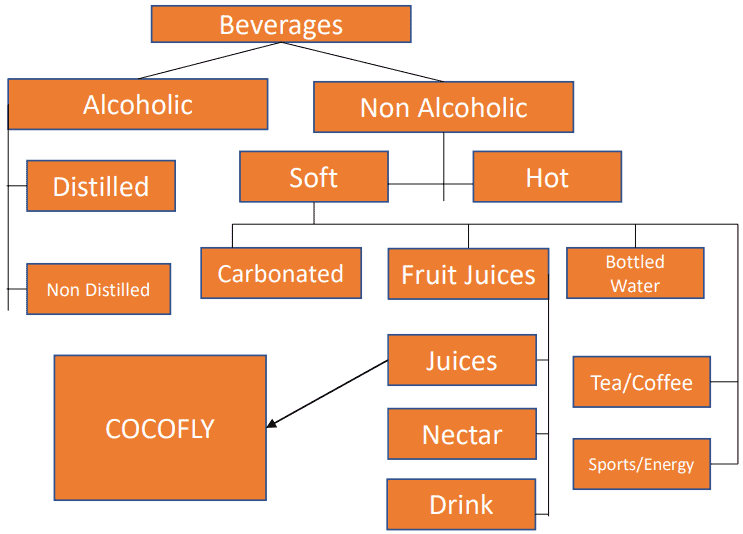The co-founders of Nilgai Foods Private Limited re-launched Cocofly in June 2017. The drink is made from pure coconut water and marketed as fresh and healthy at a very low price compared to other products from different brands. Although the product was quite a hit when it first went out in the market, the two co-founders want to ensure the product's sustainability in the future. Hence, they must come up with an effective brand positioning to gain market share in the long term.
Sourabh Bhattacharya, Romina Mathew, Rambalak Yadav
Harvard Business Review (W19091-PDF-ENG)
March 22, 2019
Case questions answered:
- Discuss the marketing mix strategy of Cocofly. Emphasize the product, price, place, and promotion aspects of its marketing strategy.
- How can the beverage market be segmented? What should be the target segment for Cocofly?
- Is Cocofly’s current distribution strategy the right one for the product? Given Cocofly’s expansion plan, should it try to establish its own distribution network, or should it continue to piggyback on the distribution network of other FMCG companies such as Patanjali Ayurved Ltd. (Patanjali)?
- Would a low-cost strategy be sufficient for Cocofly to gain market share in the long term? If not, what else should the company focus on to create a different brand positioning in the market?
Not the questions you were looking for? Submit your own questions & get answers.
Nilgai Foods: Positioning Packaged Coconut Water in India Case Answers
1. Discuss the marketing mix strategy of Nilgai Foods Private Limited for Cocofly. Emphasize the product, price, place, and promotion aspects of its marketing strategy.
Marketing Strategy of Nilgai Foods Private Limited for Cocofly
Product
India consumed a large amount of coconut water. It was generally consumed directly from the fruit. It was rarely available in packaged form in retail outlets.
Cocofly was introduced at a very low price and highlighted the fact that Cocofly has no added sugar and no preservatives, making it the only true guilt-free drink in the market.
Pricing
Cocofly was introduced at a very low price in comparison to its competitors. Initially, the product was launched in a tetra pack, which was expensive.
The packing was changed from tetra packs to polyethylene terephthalate (PET) bottles, free of BisphenolA (BPA), a chemical substance used in plastic bottles that was known to hurt human hormones.
The new packaging allowed for more size options and reduced production costs. With the new packaging, gross margins were increased, with the potential to become a healthy drink option for all consumers, including those in lower-income segments.
Place (Distribution)
Cocofly is available in major cities of India, including the NCR region, UP, Haryana, and Rajasthan. All these were non-coastal regions, where fresh coconut water was rarely available. Therefore, it seemed a preferred location to introduce Cocofly.
This drink was sold through the franchise stores of Patanjali Ayurvedic Ltd., a popular brand. It had 15,000 franchise stores in India. It expanded further through its own e-commerce platform. However, there is still a need for Cocofly’s own distribution channel.
Promotion
The marketing team promoted Cocofly through promotional videos where consumers were asked to drink Cocofly coconut water blindfolded and comment on its taste.
Cocofly was promoted as 100 percent pure coconut water that not only quenched thirst but was also healthy. The PET bottle of Cocofly acted as an informative advertisement for the products.
Better packaging >>> Good quality >>> Availability >>> Low price >>> Better sale
2. How can the beverage market be segmented? What should be the target segment for Cocofly?
• The beverage market can be segmented primarily into – Alcoholic and Non-Alcoholic
• The Alcoholic is further divided into – Distilled and Non-Distilled
• The Non-Alcoholic is further divided into – soft drinks and hot drinks
• The Soft drinks segment is further divided into carbonated, fruit juices, bottled water, ready-to-drink tea, and coffee, and sports and energy drink
• Fruit juices were further classified into fruit juices, fruit nectar, and fruit drinks

Unlock Case Solution Now!
Get instant access to this case solution with a simple, one-time payment ($24.90).
After purchase:
- You'll be redirected to the full case solution.
- You will receive an access link to the solution via email.
Best decision to get my homework done faster!
Michael
MBA student, Boston
 Best decision to get my homework done faster!
Best decision to get my homework done faster!